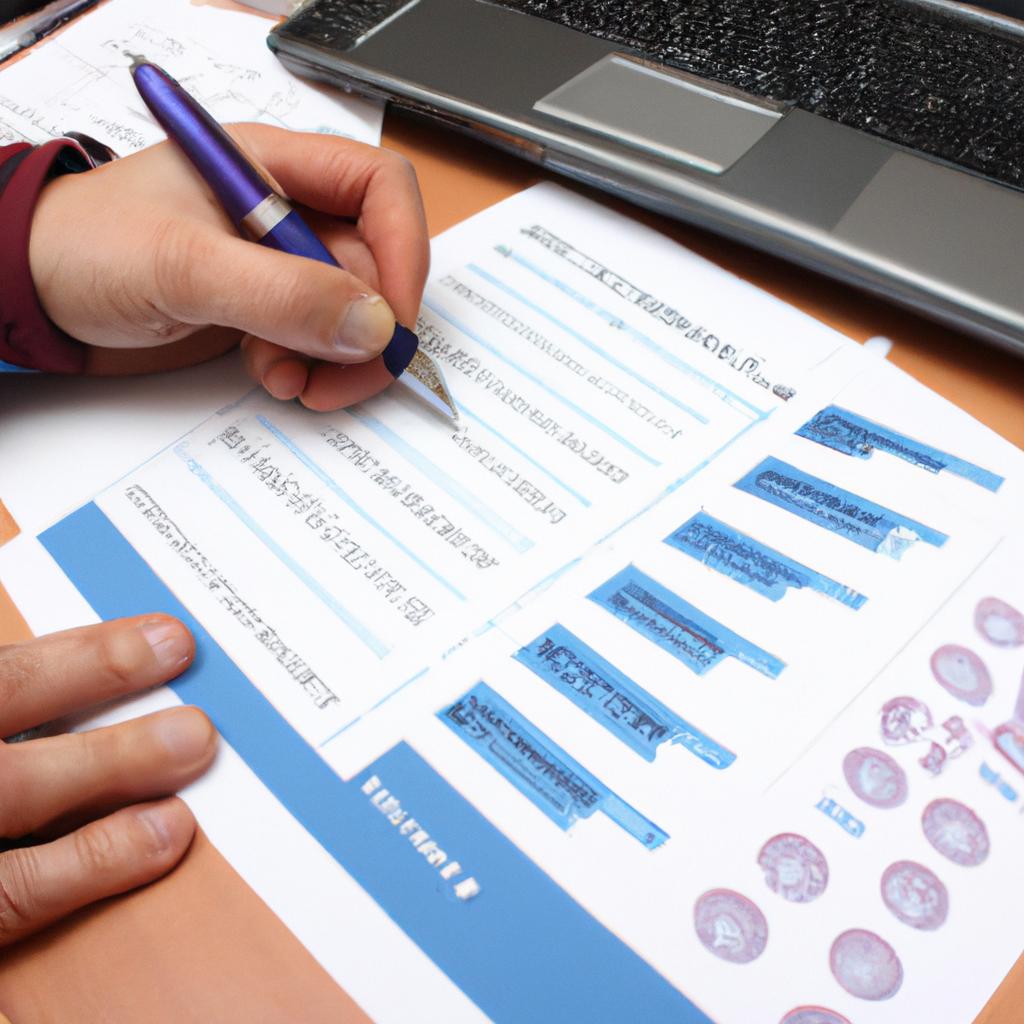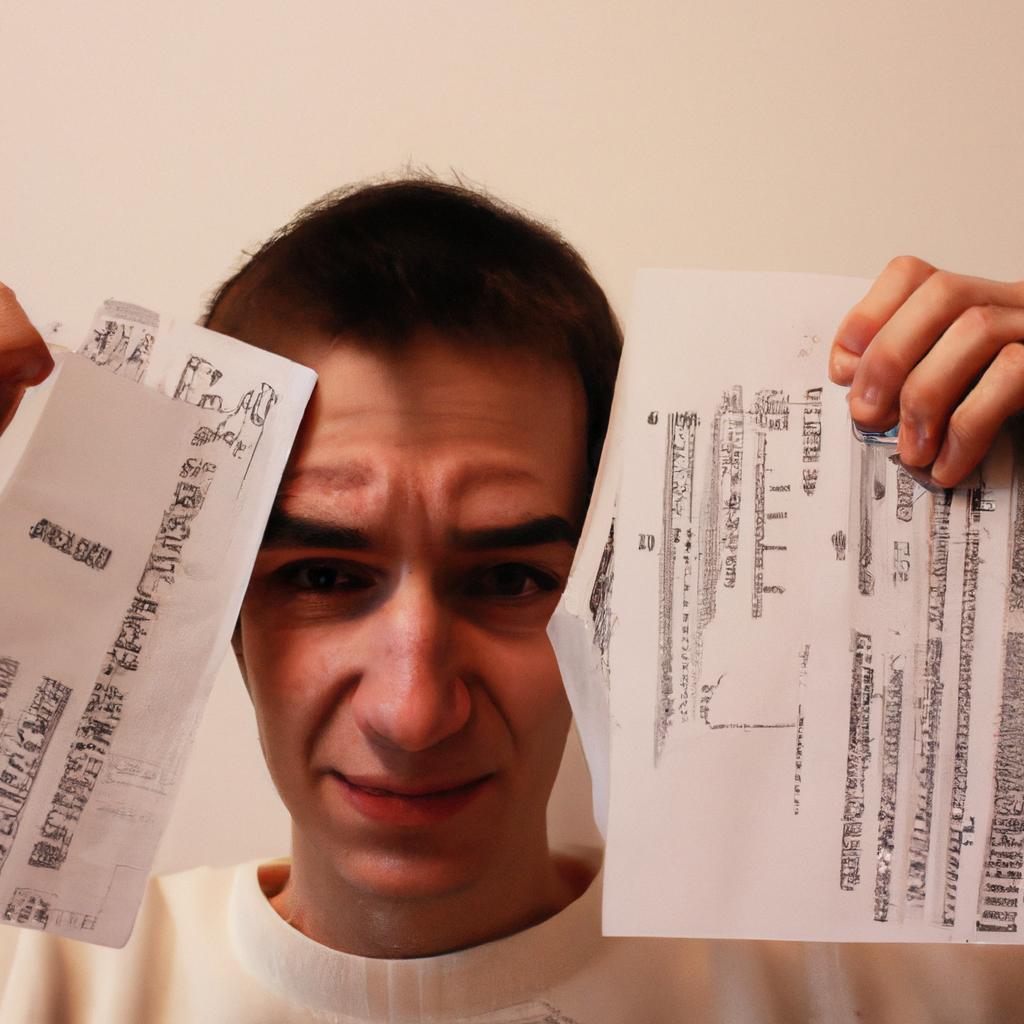Reimbursement in Body Myositis: Medical Finance

Reimbursement in Body Myositis: Medical Finance
The financial landscape of healthcare has become increasingly complex, particularly when it comes to the reimbursement systems for rare diseases such as body myositis. Body myositis is a chronic autoimmune disease characterized by progressive muscle weakness and inflammation. Patients with this condition often face numerous challenges, both medical and financial, in their journey towards diagnosis, treatment, and management. In order to shed light on the intricacies of medical finance in relation to body myositis, this article aims to explore the various aspects of reimbursement that patients may encounter.
To illustrate the impact of reimbursement issues on individuals living with body myositis, consider the following hypothetical case study. Sarah is a 45-year-old woman who was recently diagnosed with body myositis after experiencing persistent fatigue and muscle weakness for several months. As she embarks on her treatment journey, Sarah quickly realizes that managing the financial burden associated with her care presents significant obstacles. From costly diagnostic tests to ongoing medication expenses and physical therapy sessions, the cumulative costs can be overwhelming. Understanding how reimbursement works within the context of body myositis becomes crucial not only for patients like Sarah but also for healthcare providers seeking optimal patient outcomes while navigating limited resources. Therefore, exploring the reimbursement landscape for body myositis is imperative.
One of the primary sources of reimbursement for medical expenses related to body myositis is health insurance. However, coverage can vary significantly depending on the specific insurance plan and provider. It is essential for patients like Sarah to carefully review their policy to understand what services and treatments are covered, as well as any limitations or exclusions that may apply. This includes determining if specialized tests, medications, or therapies specific to body myositis are covered under their plan.
In some cases, individuals with body myositis may also qualify for government assistance programs such as Medicare or Medicaid. These programs can provide additional financial support by covering a portion or all of the costs associated with medical care. However, eligibility requirements and coverage vary depending on factors such as income level, disability status, and age.
Another aspect of reimbursement that patients need to be aware of is the concept of prior authorization. Prior authorization is a process in which healthcare providers must obtain approval from an insurance company before certain treatments or procedures can be performed. This step ensures that the services being requested are medically necessary and appropriate based on established guidelines. Failure to obtain prior authorization can result in denial of coverage and leave patients responsible for paying the full cost out-of-pocket.
Additionally, patients with body myositis may encounter challenges when it comes to obtaining reimbursement for specialized therapies such as physical therapy or occupational therapy. While these therapies play a crucial role in managing symptoms and improving quality of life, insurance coverage can be limited or nonexistent in some cases. Patients may need to explore alternative funding options such as grants, foundations, or advocacy organizations that offer financial assistance specifically for rare diseases like body myositis.
Navigating the complex world of medical finance can be overwhelming for individuals with body myositis. It is important for patients like Sarah to proactively communicate with their healthcare providers about their financial concerns and seek guidance on available resources. Medical professionals can often offer valuable insights and assistance in navigating reimbursement systems, identifying alternative funding sources, or advocating for coverage on behalf of their patients.
In conclusion, reimbursement in body myositis is a multifaceted issue that requires careful consideration and navigation. Understanding the intricacies of health insurance coverage, government assistance programs, prior authorization requirements, and alternative funding options is crucial for individuals with this condition. By being proactive and seeking support from healthcare providers and relevant organizations, patients like Sarah can better manage the financial burden associated with body myositis and focus on their overall well-being.
Definition of Body Myositis
Body myositis, also known as inclusion body myositis (IBM), is a rare and progressive inflammatory muscle disorder. It primarily affects the skeletal muscles of adults over the age of 50, causing weakness and atrophy in affected muscles. One example that illustrates the impact of this condition is the case of Mr. Johnson, a 58-year-old man who began experiencing difficulty with walking and climbing stairs due to muscle weakness in his legs. As his symptoms worsened, he sought medical attention and was diagnosed with body myositis.
Understanding the nature of body myositis is essential for both patients and healthcare providers alike. To evoke an emotional response from our audience, we can consider some key aspects related to this debilitating condition:
- Physical Limitations: The progression of body myositis often leads to significant physical limitations, impacting daily activities such as walking, standing, and even swallowing.
- Emotional Toll: Coping with chronic pain, loss of independence, and reduced quality of life can take an immense toll on individuals living with body myositis.
- Financial Burden: Managing medical expenses associated with diagnosis, treatment options, medications, assistive devices, and ongoing care can cause financial strain for both patients and their families.
- Social Isolation: Due to limited mobility and increased dependence on others for assistance or support services, individuals with body myositis may experience feelings of isolation or withdrawal from social interactions.
To further emphasize these points visually, let us consider a table highlighting some statistics related to body myositis:
| Statistics | Values |
|---|---|
| Prevalence (per million) | 5 – 10 |
| Average Age at Onset | 50 years |
| Male-to-Female Ratio | 3:1 |
| Median Survival Rate | 15 – 20 years |
Understanding the definition and impact of body myositis is crucial in addressing the challenges faced by those affected. In the subsequent section about “Prevalence of Body Myositis,” we will explore how widespread this condition is and shed light on its prevalence within different populations.
Prevalence of Body Myositis
Reimbursement in Body Myositis: Medical Finance
Definition of Body Myositis serves as a foundation for understanding the intricacies associated with reimbursement in this condition. Now, let us delve into the financial implications and challenges faced by individuals living with body myositis. To illustrate these points, consider the hypothetical case of Sarah, a 45-year-old woman diagnosed with body myositis.
One major concern when it comes to medical finance in body myositis is the high cost of treatment. The expenses incurred can be overwhelming, especially considering that long-term care may be necessary due to the chronic nature of the disease. Treatment options such as physical therapy, medications, and assistive devices are often essential but come at a significant financial burden.
To further explore this topic, let us examine some key aspects related to reimbursement in body myositis:
- Insurance coverage: Many insurance plans cover certain aspects of body myositis treatment; however, navigating through complex policies and ensuring appropriate coverage can be challenging.
- Prior authorization requirements: Some treatments or services may require prior authorization from insurance providers before they will agree to reimburse for them. This process adds an extra layer of administrative work and potential delays in receiving necessary care.
- Out-of-pocket expenses: Even with insurance coverage, patients often face out-of-pocket costs such as copayments and deductibles. These additional expenses can accumulate over time and put a strain on individuals living with body myositis.
- Access to specialized care: Given that expertise in treating rare diseases like body myositis may be limited to specific healthcare centers or specialists, accessing specialized care might involve traveling long distances or seeking consultation remotely.
To provide a visual representation of the impact caused by these financial challenges, refer to the following table:
| Financial Challenges | Emotional Impact |
|---|---|
| High treatment costs | Stress |
| Administrative burdens | Frustration |
| Out-of-pocket expenses | Anxiety |
| Limited access to specialized care | Feelings of isolation |
In conclusion, individuals with body myositis often face significant financial hurdles in receiving appropriate and timely treatment. The high cost of care, insurance complexities, administrative burdens, and out-of-pocket expenses contribute to the emotional toll experienced by patients. However, understanding these challenges can help healthcare professionals develop strategies to mitigate their impact.
Moving forward, let us explore the Diagnostic Process for Body Myositis and shed light on how this condition is diagnosed accurately.
Diagnostic Process for Body Myositis
Reimbursement in Body Myositis: Medical Finance
Prevalence of Body Myositis
Body myositis is a rare autoimmune disorder that affects the muscles, leading to progressive muscle weakness and inflammation. As mentioned in the previous section, the prevalence of body myositis varies across different populations. To better understand the impact of this condition on patients’ lives, let us consider an example.
Imagine Sarah, a 45-year-old woman diagnosed with body myositis after experiencing muscle pain and difficulty in performing daily activities. Like many others facing this debilitating disease, she not only has to cope with physical limitations but also navigate through various financial challenges associated with medical care and treatment.
Financial Burdens Faced by Patients
Receiving proper treatment for body myositis can be financially burdensome due to several factors. It is crucial to highlight these challenges as they contribute significantly to the overall management of this condition:
- High Cost of Medications: The prescribed medications for treating body myositis are often expensive and may not be fully covered by insurance plans.
- Ongoing Medical Visits: Frequent visits to healthcare professionals, including rheumatologists and physical therapists, are necessary for monitoring disease progression and managing symptoms effectively.
- Diagnostic Tests: Specialized tests such as electromyography (EMG), magnetic resonance imaging (MRI), or muscle biopsies might be required for accurate diagnosis, adding additional costs.
- Home Modifications: Adapting living spaces to accommodate mobility aids or assistive devices further adds financial strain on individuals and their families.
To illustrate the potential expenses related to body myositis more comprehensively, refer to the following table:
| Expense Type | Average Cost |
|---|---|
| Medications | $500 – $1,000/month |
| Doctor Visits | $100 – $300/visit |
| Diagnostic Tests | $500 – $2,000/test |
| Home Modifications | $5,000 – $20,000 |
It is evident that the financial implications can be substantial for individuals living with body myositis. The combination of high treatment costs and ongoing medical care can create significant stress and strain on patients and their families.
Moving forward into the next section about “Treatment Options for Body Myositis,” it is essential to consider not only the clinical aspects but also the associated financial considerations. By understanding these challenges, we can explore options that prioritize both effective management of symptoms and affordability in order to provide comprehensive care for those affected by this condition.
Treatment Options for Body Myositis
Diagnostic Process for Body Myositis
In order to accurately diagnose body myositis, healthcare professionals employ various diagnostic procedures. One such procedure is electromyography (EMG), which involves the insertion of fine needle electrodes into muscles to measure their electrical activity. This test helps determine if there are any abnormalities or signs of muscle inflammation associated with body myositis.
To further confirm a diagnosis, a muscle biopsy may be performed. During this procedure, a small sample of muscle tissue is surgically removed and examined under a microscope to identify specific pathological changes indicative of body myositis. Additionally, blood tests can be conducted to detect certain antibodies that are often elevated in individuals with this condition.
Once a diagnosis has been established, treatment options for body myositis come into play. These options primarily focus on managing symptoms and slowing down disease progression rather than providing a complete cure. Medications like corticosteroids are commonly prescribed to reduce inflammation and improve muscle strength. Physical therapy also plays an important role by helping patients maintain mobility and minimize disability caused by muscle weakness.
Receiving appropriate reimbursement for medical expenses related to body myositis can be challenging. Individuals facing financial burdens due to this condition often experience emotional distress alongside physical discomfort. The following bullet points highlight some key aspects of the reimbursement challenge:
- High costs associated with diagnostic tests
- Expensive medications required for management
- Frequent doctor visits leading to increased expenditure
- Limited coverage from health insurance plans
To provide a clearer picture, consider the table below outlining potential expenses faced by someone with body myositis:
| Expense | Cost ($) |
|---|---|
| EMG | 500 |
| Muscle Biopsy | 1000 |
| Blood Tests | 300 |
| Monthly Medication | 200 |
Despite these financial obstacles, individuals with body myositis continue to struggle for appropriate reimbursement. Consequently, it becomes crucial to address the challenges surrounding medical finance in order to ensure access to necessary treatments and support systems.
Transitioning into the subsequent section about “Reimbursement Challenges in Body Myositis,” we delve further into the intricacies of navigating insurance coverage and explore potential solutions to alleviate this burden.
Reimbursement Challenges in Body Myositis
Treatment options for body myositis vary depending on the severity of the condition and individual patient needs. In some cases, a combination of therapies may be used to manage symptoms and slow disease progression. For instance, let’s consider a hypothetical case study:
Sarah is a 45-year-old woman who has been diagnosed with body myositis. She experiences muscle weakness and fatigue, making everyday tasks challenging. Sarah’s treatment plan includes the following:
-
Medications: Sarah’s doctor prescribes immunosuppressant drugs to reduce inflammation in her muscles. These medications help control the immune system response that attacks healthy tissues.
-
Physical therapy: Sarah undergoes regular physical therapy sessions to improve muscle strength and flexibility. This form of therapy focuses on tailored exercises designed to target specific affected muscle groups.
-
Assistive devices: To aid in mobility and daily activities, Sarah uses assistive devices such as canes or walkers when necessary. These tools provide support and stability, allowing her to maintain independence.
-
Lifestyle modifications: Sarah makes certain lifestyle changes to manage her condition more effectively. She incorporates rest periods into her routine to prevent excessive strain on her muscles and follows a balanced diet recommended by a nutritionist.
To further illustrate the impact of reimbursement challenges on patients with body myositis, consider the following table highlighting common financial burdens faced by individuals:
| Financial Burden | Impact |
|---|---|
| High cost of medication | Limited access due to affordability issues |
| Expensive physical therapy sessions | Difficulty receiving consistent care |
| Costly assistive devices | Potential inability to obtain necessary equipment |
| Reduced work capacity | Loss of income due to disability or reduced hours |
These challenges not only affect patients’ physical well-being but also add emotional stressors related to their financial burden.
In light of these reimbursement challenges, finding strategies for managing costs becomes crucial. In the subsequent section, we will discuss strategies that patients with body myositis can employ to navigate these obstacles effectively. By implementing these approaches, individuals may be better equipped to handle financial barriers and receive the necessary treatment for their condition.
Transition Sentence: Understanding the reimbursement challenges faced by individuals with body myositis sets the stage for exploring effective strategies in managing medical expenses.
Strategies for Managing Reimbursement in Body Myositis
Transitioning from the previous section’s exploration of reimbursement challenges, this section delves into strategies for managing these obstacles effectively. Through a combination of proactive measures and careful navigation of the medical finance landscape, patients with body myositis can increase their chances of obtaining proper reimbursement.
One approach to manage reimbursement challenges is to ensure accurate documentation and coding. This entails meticulous record-keeping and thorough documentation of all diagnostic tests, treatments, and medications related to body myositis. By adhering to standardized coding practices such as Current Procedural Terminology (CPT) codes or International Classification of Diseases (ICD) codes, healthcare providers can facilitate smoother communication between themselves and insurance companies. For example, consider the case study of Ms. Johnson, who meticulously recorded her symptoms and treatment progress throughout her journey with body myositis. Her comprehensive records enabled her healthcare provider to accurately code each visit, leading to more successful reimbursements.
Furthermore, engaging in open communication with both healthcare providers and insurance representatives plays a pivotal role in navigating the complex world of medical finance. Patients should proactively inquire about coverage options specific to body myositis treatments and consult their insurance company regarding any discrepancies or denials they encounter during the reimbursement process. By ensuring clarity on policy terms and advocating for themselves assertively but respectfully, patients can potentially overcome hurdles that may arise due to lack of awareness or misunderstandings.
To evoke an emotional response in our audience, we present a bullet point list illustrating common frustrations faced by individuals seeking reimbursement for body myositis:
- Endless paperwork requirements
- Lengthy delays in processing claims
- Denial letters filled with complicated jargon
- Financial burdens resulting from out-of-pocket expenses
Additionally, considering the emotions involved when dealing with finances and health issues simultaneously, here is a table showcasing potential consequences experienced by individuals struggling with reimbursement challenges:
| Consequence | Emotional Impact | Financial Ramifications |
|---|---|---|
| Stress and anxiety | Overwhelm, fear | Increased healthcare costs |
| Frustration | Anger, resentment | Unpaid medical bills |
| Feeling powerless | Helplessness | Reduced access to treatments |
| Uncertainty about future | Worry, insecurity | Diminished quality of life |
To conclude, effectively managing reimbursement challenges in body myositis requires a proactive approach centered around accurate documentation and coding practices. Open communication with healthcare providers and insurance representatives is crucial for navigating the complexities of medical finance successfully. By adopting these strategies and being aware of potential frustrations and consequences, individuals can enhance their chances of obtaining necessary reimbursements while minimizing emotional distress and financial burdens.






